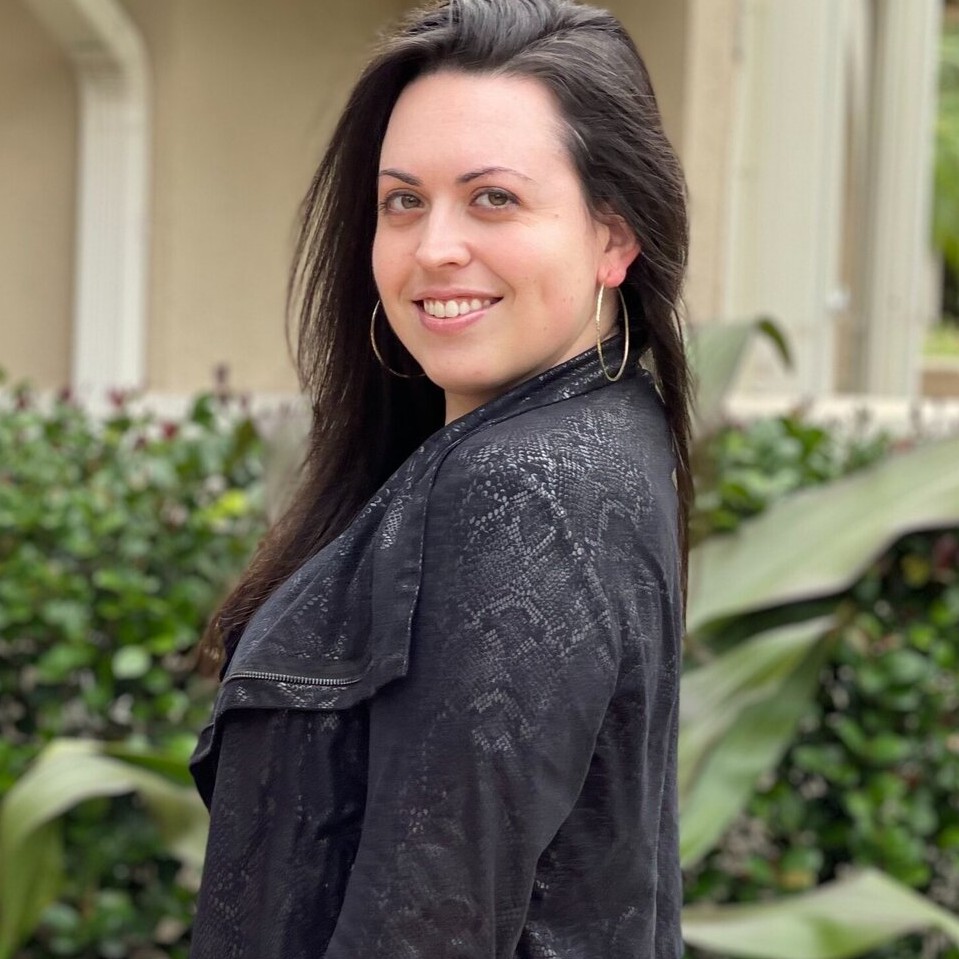Could These Women Be the First to Walk on Mars?
Abby Harrison, Taylor Richardson, and Jessica Watkins are taking unique paths to reach the same goal. But for all three, their dreams of visiting the red planet will depend solely on NASA.
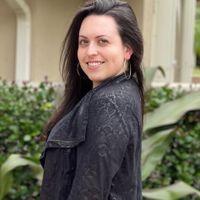
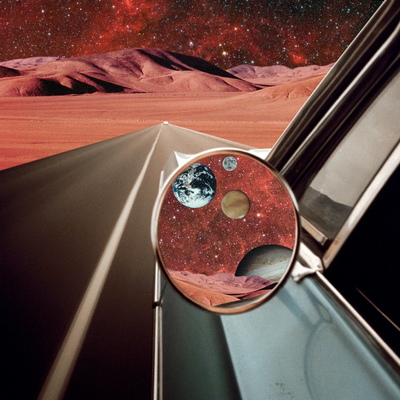
Never lament a long wait at TSA again: In 2010, 13-year-old Abigail Harrison was standing in a Florida airport security line when she spotted Luca Parmitano, an Italian astronaut with the European Space Agency, a couple people behind her. She grabbed her mom’s shoulders, shaking her, pointing at Parmitano in excitement. “I remember being like, ‘Mom! Mom! That's astronaut Luca Parmitano behind us.’ Then my mom looked at me, turned her head to look at him, looked back at me, and said, ‘Nah, Abby. Not all bald men are astronauts.’”
Turns out that bald man was Parmitano, and he would change the course of Harrison’s life.
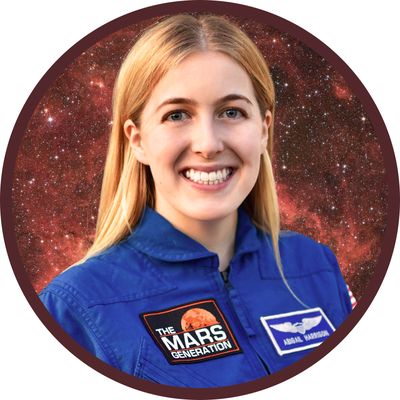
Abigail Harrison, a.k.a. Astronaut Abby.
Harrison, 22, knows the chances of actually becoming an astronaut are slim—NASA received a record-breaking 18,300 applications in 2016 alone—but that hasn’t stopped her from doing everything she possibly can to be one of the first people to walk on Mars. Thanks to that chance meeting with Parmitano, she’s confident she will get there.
“I went up and introduced myself and he ended up sitting down with me for about an hour telling me his story, giving me advice, answering all of my questions—everything that I could have ever wanted to hear from someone who would actually go to space,” says Harrison, who says she has dreamt of becoming an astronaut since she was 5 years old. “At the end of the meeting, he wrote down his email address and said, ‘If you have any more questions, you can email me, I will be your astronaut.’”
Parmitano kept his promise. Three years later he asked Harrison to be his earth liaison. Harrison would help document his experience living and working on board the International Space Station (ISS) and share it with her Twitter followers, who began referring to her as “Astronaut Abby” after Harrison created the account for a school project. It was something no astronaut had done before—let alone with a teenager who wasn’t affiliated with a space agency or even from the same country.
Harrison traveled to Baikonur, Kazakhstan, to watch Parmitano’s launch. Every few weeks, she would interview him about space and share his answers, along with pictures and videos of him on board the ISS. After Parmitano’s six-month mission ended, Harrison knew she wanted to continue to champion space education. She started documenting her own journey towards becoming an astronaut and encouraging other young girls to pursue careers in STEM. Nearly a decade after that chance meeting with Parmitano, Harrison has amassed nearly 1 million followers across her platforms—a space-fluencer if you will—and dedicated her life to achieving her space flight dreams.
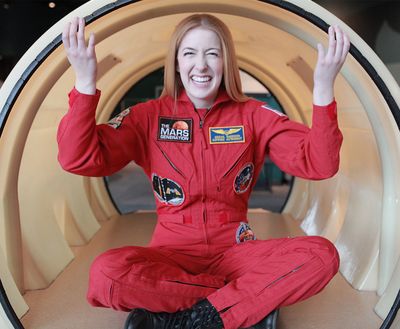
Harrison proudly wears her Mars Generation flight suit.
Growing up in Minnesota, Harrison played sports—soccer, track and field, gymnastics, and fencing—along with the flute and violin. “I had a lot of energy,” she laughs. But her favorite activity was the Girls in STEM program, known as GEMS (Girls, Engineering, Math, Science), making robots and hot air balloons.
Get exclusive access to fashion and beauty trends, hot-off-the-press celebrity news, and more.
“When I was a kid, astronauts were the celebrities of my world. They were quite literally stars,” says Harrison. “The way that a lot of kids knew who Justin Bieber or Ariana Grande were... I couldn't have cared less about that; astronauts were the people that I worshipped as celebrities.”
At 15, Harrison applied to college at the University of Minnesota, where she spent two years in a post secondary enrollment program (also known as dual enrollment) in hopes of graduating early. She decided she wanted to learn in a more intimate setting and transferred to Wellesley, a private women's liberal arts college in Massachusetts, but the school didn’t accept her credits. For an overachiever like Harrison, it was a setback, but it didn’t change the plan—she would still get to Mars.
“It helped me break out of that mindset that I had to rush through everything in life,” Harrison says. “What will be important in 10 years? Will it have been getting three degrees before 30? Or will it have been getting two degrees and making sure that they're really high quality and that the experiences that I've had contribute to my personal growth? I found [the latter] is more important to me.”
During her first semester at Wellesley studying Biology and Russian, Harrison founded a non-profit, The Mars Generation, an IRL version of her Astronaut Abby content. The volunteer-driven organization, which Harrison funds through her paid influencer work in addition to the money she makes through honorariums and speaking engagements, provides educational content for STEM majors. To date, The Mars Generation has a student leadership program composed of more than 2,000 people throughout the country, and has sent 40-plus students to space camp in Huntsville, Alabama, on full scholarships. The initiative is close to Harrison’s heart; she also attended space camp thanks to the help of a non-profit.
“Representation really does matter. The majority of people that are not seeing themselves represented in career paths is enough to knock them out of wanting to [pursue] that [career],” says Harrison. “So [The Mars Generation] works really, really hard to show a lot of positive female role models in STEM fields and to highlight our students.”

Between running a company, doing outreach work, and landing a book deal—her upcoming book, Dream Big! Reach for Your Stars (out spring 2021) will include advice on how to achieve your dreams with tips and anecdotes from her life—Harrison doesn't plan to apply to NASA for at least another seven years, give or take. She knows she has the minimum requirements for the program—the degree (she graduated from Wellesley in 2019), the research, the internships—but she still wants to develop more experience in each of these areas. Harrison will be in her early 30s when NASA plans to send the first people to Mars in the 2030s, and she’s confident she’ll be an ideal candidate then.
“Astronauts are public servants that have a responsibility to come back and share their firsthand experiences of space travel with the rest of us. They have to be someone who's able to talk to the public in a variety of different forms, whether it's through video or audio or social, and they need to be able to effectively engage the public in what they’re doing,” explains Harrison. “That’s what I’m doing and I think that’s something that will hopefully shine through very strongly to help qualify me in the future. Also, I like Earth [right now]. Mars may be where I'm trying to go, but Earth is my favorite planet.”
At the library in her hometown in South Carolina, a young Taylor Richardson found the biography of Dr. Mae Jemison, the first African-American woman to go to space, and noticed similarities between Jemison and herself—a love for singing, dancing, and, ultimately, space. But when Richards was vocal about her dreams of becoming an astronaut at school, the other students taunted and bullied her.
“It started when I was in second grade,” says Richardson, who eventually moved to Jacksonville, Florida, with her mother for a fresh start. “I wanted to be an astronaut and they thought I couldn’t do it because of my skin color. It was a constant thing every day.”
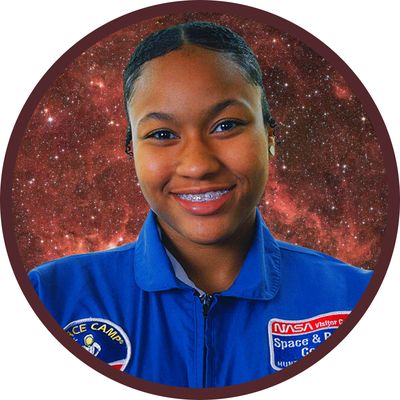
Taylor Richardson, who raised more than $100,000 to help kids like her see themselves represented in STEM.
Then, Richardson attended space camp in Huntsville, Alabama. The 9-year-old would regularly get in trouble for sneaking out of her bunk and staring at the stars, earning her the nickname “Astronaut StarBright.” But for the first time, she felt like she belonged—playing in a space simulator, building a civilization on Mars, and learning about the history of space exploration. Her nickname would follow her home.
Today, Richardson’s 16,000 combined followers on Twitter and Instagram are most familiar with Astro StarBright, the 16-year-old who crowdsourced inspiring GoFundMe campaigns in support of women in STEM. At 14 years old, Richardson raised nearly $20,000 to send girls to a screening of Hidden Figures, the space drama based on NASA mathematicians Katherine Johnson, Dorothy Vaughan, and Mary Jackson, who played a vital role in the U.S. space program, after being invited by former first lady Michelle Obama to a screening of the film at the White House. There, she was introduced to astronaut Yvonne Cagle. She met Dr. Jemison that same year at Clark Atlanta University's commencement.
“I realized we've been talking about the Apollo 11 mission since I was young and nobody mentioned these three women [in Hidden Figures]. I think it’s amazing how these African-American women have made great contributions to the world. We just didn’t know about it,” says Richardson. “I thought that this story needed to be shared and that’s what made me bring girls, especially girls of color, to see the film, along with A Wrinkle in Time.”
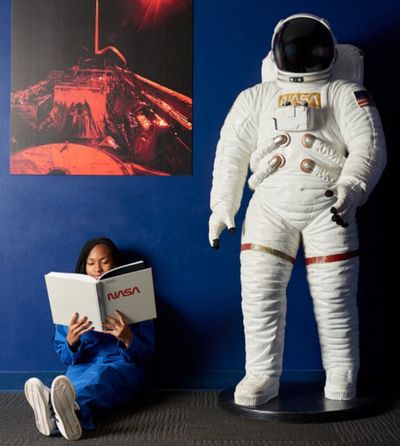
Richardson has wanted to become an astronaut since she was nine years old.
In 2018, Richardson crowdsourced $110,000 for a screening of that movie, thanks to a little help from actor Chris Pine (who plays Dr. Alex Murry), director J.J. Abrams, and Oprah, who also stars in the film. After Richardson went on Good Morning America to talk about how much she raised, Oprah surprised her with a matched donation. Thousands of girls were able to see the film.
When she’s not busy creating successful GoFundMes (currently she's raising money for COVID-19 healthcare workers' childcare expenses), Richardson is doing what she can to become one of the first people to step on Mars. She's focused on getting through high school and eventually applying to an HBCU (Howard University and Spelman College are her top choices; MIT is also in consideration). She’s been a student ambassador in Abigail Harrison's The Mars Generation student leadership program since its inception, helping raise awareness about space exploration. Harrison and Richardson admire each other's work, each flourishing as young leaders in the STEM field.
"I just like to help people and bring people closer together on a human level," Richardson says. "It’s really hard dealing with school as well because I’m always traveling [for conferences and speaking engagements], but my friends and my mom and my teachers try to work with me because they understand how busy I am."
Her mother, Latonja, is continuously in awe of her daughter’s accomplishments. “If someone would have told me a quiet, bullied, ADHD Black girl would be where she is today at age 16 and inspiring all these people, I would have said no way. But I'm truly proud of Taylor and I hope I get to see her [become an astronaut].”
It was the day of the infamous phone call. Jessica Watkins, a doctoral fellow at the California Institute of Technology, was sitting at home in Pasadena, California, feeling under the weather. Next to the phone was a notebook with a line written inside that she planned to read out loud: “Thank you for the opportunity, and I will certainly apply next year.”
But she never spoke those words. When the phone rang in May 2017, Watkins was officially accepted as one of 11 people in NASA’s most recent astronaut class.

Jessica Watkins, who graduated from the astronaut training program at NASA this year.
Watkins, now 31, had dreamt of becoming an astronaut since she was 9 years old, but she never let herself get her hopes up. At the time of the call, she was working on research at Caltech for the Mars Science Laboratory Curiosity Rover, a robotic space probe NASA launched in 2011—the very mission that helps NASA get one step closer to sending humans to Mars.
“I always had in the back of my mind that I wanted to meet the minimum requirements to apply to [be an astronaut]. That meant studying something in the STEM field, and then getting the appropriate degrees that are a part of the requirements for the application,” explains the Colorado native, who played rugby at Stanford University and later earned her doctorate in Geology at UCLA. “I actually started out as a mechanical engineer, but it wasn’t something I was passionate about—it was something more so that I thought I needed to do to reach those goals. When I found out that I could study the geology of planets and, specifically, the geology of Mars, that just really excited me. It led me down this career path to study the surface of Mars, which has been really fun.”
Watkins is one of six women in her astronaut class, the most women a graduating class has seen since 1978, and is well aware of the diverse skill sets each of them bring to the space program. She's the sixth African-American female astronaut at NASA, and one of the youngest astronaut candidates in the program's history. Her team, who refer to themselves as “the Turtles,” graduated in January 2020 after two years of training, making them officially eligible for spaceflight—including a trip to Mars.

Michelle Rucker, the Mars integration team lead at NASA who’s prepping humans to travel there, says the optimal crew size is six people, but it will likely contain four. (The more people, the heavier the rocket is, and the harder it is to land safely.) Currently, NASA is trying to predict how much food and supplies crew members will need for a mission. When something runs out or breaks, there’s not an option to just replace it as there is on board the International Space Station.
Unlike a mission to the ISS or the moon, where NASA plans to send the first woman in 2024, Mars will entail a long-duration mission (predicted to be around two years), which requires an incredibly high level of preparation. The orbital placement of the planet makes it even trickier. If there’s a launch delay trying to get to the International Space Station, NASA could try again tomorrow. If there’s a launch delay for a Mars mission, the agency might have to wait another two years. Ultimately, the next mission to the moon will guide the processes and procedures for Mars.
“The entire history of human spaceflight has been Earth-centric. To get to Mars, you have to change your coordinate frame of reference from being Earth-centric to sun-centric,” explains Rucker. “When we land on Mars and we're ready to come home again, Earth wasn't where we left it. And now we have to chase Earth around the sun to get back to it.”

The newest class of astronaut graduates pose for a selfie together before getting fitted for flight suits at Ellington Airport near NASA’s Johnson Space Center in Houston, Texas.
“We certainly understand the risks that are involved in human spaceflight,” says Watkins. “We put our lives in [NASA and our contractors’] very capable hands, and we know that they are going to do everything in their power to make sure that the vehicles are as safe as possible.”
Although the NASA astronauts who will complete the Mars mission in the 2030s haven’t been chosen yet, there’s a good chance Watkins could be one of the people who land on the red planet.
One thing that’s for certain is there’s no straight path to getting there. For aspiring astronauts like Harrison and Richardson, Watkins advises them to stay true to themselves as well-rounded human beings—making time for both personal and professional passions.
“I think it’s really important to see yourself represented. I know, certainly for me, having role models and particularly ones that look like me was really important,” says Watkins, who admired Sally Ride, Judith Resnik, and Mae Jemison growing up. “I hope that young girls, and especially young girls of color, find their passions, feel empowered to pursue them, and find mentors along the way that help encourage them so that they can live their dreams.”
This story has been updated.


Rachel Epstein is a writer, editor, and content strategist based in New York City. Most recently, she was the Managing Editor at Coveteur, where she oversaw the site’s day-to-day editorial operations. Previously, she was an editor at Marie Claire, where she wrote and edited culture, politics, and lifestyle stories ranging from op-eds to profiles to ambitious packages. She also launched and managed the site’s virtual book club, #ReadWithMC. Offline, she’s likely watching a Heat game or finding a new coffee shop.
